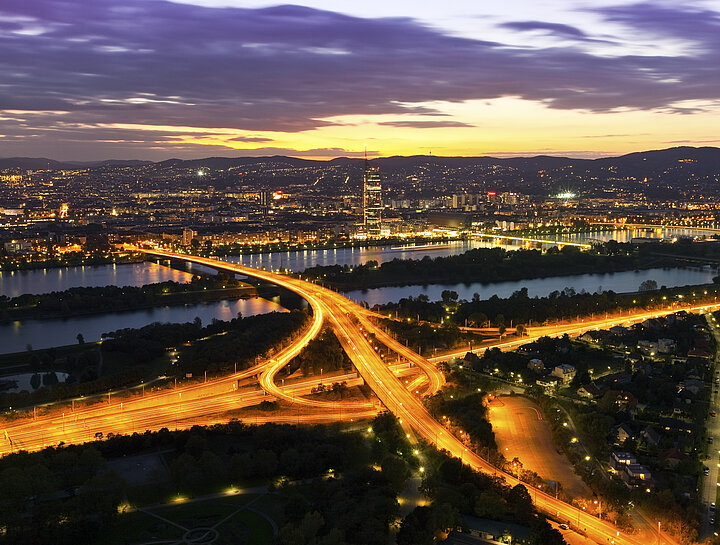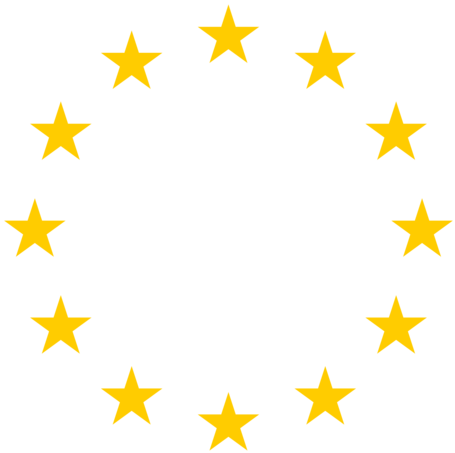
Central location in Europe
Thrive in Europe’s Centre! With a total land area of 84,000 km², the Republic of Austria certainly does not rank among the largest EU member states. However, it does stand out due to its central location in Europe. Every European capital city can be reached by air in less than three hours flying time from Vienna Airport.
Perfect infrastructure
The country is not only geographically at the heart of the New Europe. The nation’s location at the interface of important transport routes between both North and South as well as East and West offer excellent links to the entire European transport and traffic infrastructure.
About 2,000 kilometres of well-developed motorways and expressways, railway connections and the Danube as a waterway complemented by a dense network of flight connections ensure quick accessibility, especially to all regions in Eastern Europe.

Flight connections
Austria has a total of six commercial airports served by national and international airlines. 40 destinations in Central and Eastern Europe are served from Vienna Airport alone, more than other international airports such as those in Frankfurt, London, Prague and Brussels.
Every European capital city can be reached from Vienna in less than three hours by air.
Flight times
- Vienna - Bucharest (1.071 km) – 95 minutes
- Vienna - Warsaw (738 km) – 60 minutes
- Vienna - Krakow (445 km) – 40 minutes
- Vienna - Helsinki (1.700 km) – 2 hours 25 minutes
- Vienna - Zagreb (384 km) - 50 minutes

Railway network
People in Austria travel twice as many kilometres with trains, street cars and the underground as the EU average. This is the conclusion of an analysis carried out by the mobility and transport organisation VCÖ on the basis of data provided by the EU Commission. The railway network extends over 5,600 kilometres and links more than 1,500 train stations.
Train stations frequently serve as central hubs for local public transport and are located in the centre of cities and towns, which is why the railway station buildings often feature a correspondingly imposing design.
The most important train stations in Austria are located in Vienna, Innsbruck, Linz, Graz and Salzburg. Austrian train stations are well connected to the international rail network.
Road traffic
In the year 2023, the entire length of Austrian motorways equalled 1.749 kilometres. They are complemented by 500 kilometres of expressways. In Austria motorists are required to pay tolls or purchase a toll sticker in order to use these national roads. However, this is indicated on the relevant traffic signs on Austrian roads.
Tolls can be paid either in the form of
- toll stickers, which have also been available digitallydigitally () since 2017
- the digital route tollsdigital route tolls () for the automatic recording of distances travelled by passengers cars via video recognition
- or the GO toll levied on trucks and caravans.
Austria is optimally connected to transregional traffic and transport networks thanks to its central geographical location and outstanding traffic and transport infrastructure.
Water traffic
Austria’s links to international water transport are not only mentioned here for the sake of completeness. The Rhine-Main-Danube Canal extending across Austria links Austria to the North Sea as well as to the Black Sea.
Data highway
In addition to ideal transport connections via roads, the railways, the Danube and air traffic, Austria has also strongly expanded its entry onto the data highway.
In an EU comparison, Austria is investing large sums of money to upgrade its telecommunications infrastructure, offering state-of-the-art, high-performance networks.
Located at the junctions of all the important data and power lines, and as a transport hub with a stable energy supply, Austria combines the highest level of attractiveness as a business location for companies and the best quality of life and affordability in an international comparison. It is important to mention the country’s considerably better than average green energy mix with which Austria stands out along with the reliability of its energy supply.

